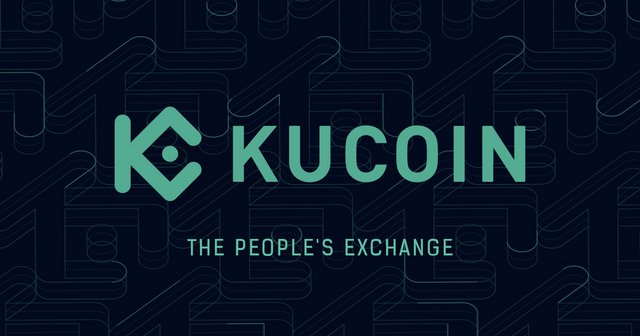Crypto Academy / Season 3 / Week 1 - Homework Post for: Professor @imagen// By:@zeeshanakram
Hello steemians how are you i hope you will be fine. I am very thankful to Professor @imagen for this wonderful lecture. so lets discuss about this lecture.
Question:01
Research and choose 2 platforms where you can do Staking, explain them, compare them and indicate which one is more profitable according to your opinion. (Binace is not allowed)
Answer:
According to me Coinbase and Kucoin are best therefore, i decide to choose these two platforms Coinbase and Kucoin.
Coinbase:

source
I think the coinbase is One of the largest digital currency platforms where a users can use its exchange system and wallet to transfer through cryptocurrencies. It also offers a a lot of services that include cumulative services and this platform was established in 2012.
It provides Products, services, including training platforms, automated investment options and stock services.
Users can provide tokens. In general, Coin Base offers a competitive cost structure compared to similar options. However, customers do not have direct access to funds held at the Quinn base and also have poor customer support services.
Kucoin:

source
This exchange is the start of accumulation. This is the first exchange staking system This is possible by using a soft stacking mechanism. He advocated allowing the soft stacking method for the dissertation.
What is soft staking?
In this case, your user may need to log in to comment. Through soft staking , it allows users to be flexible on a daily basis, original gifts and portfolio and composite management.
How staking works?
In accumulation or staking , the consumer has the right to confirm the transaction based on the amount of coins that the user has locked in his wallet. Tags are encouraged to create new blocks or increase trades in the blockchain to receive rewards.
Stacking is the method that involves many trader, investor,to lock their currency codes into a smart contract known to others as a document. Accumulation usually involves consumers keeping their coins in their wallets. These funds depend on the guarantee that the tags will be honest and diligent in performing their duties in verifying transactions on the operating system. And if necessary, they should keep something as a kind of desire.
Comparison Between Coinbase and KuCoin?
KuCoin:
- KuCoin offers more profitable rewards.
- Staking method is very easy.
- Springy Stacking Anchors Zero Fee.
- KuCoin Staking Fee= 5% – 10%
Coinbase:
- Coinbase Staking Fee= 20% – 25%
- Coinbase is a digital currency wallet.
- Coinbase transaction fee is very high.
- Coinbase tackle a classic staking system.
Which platform is best:
According to me KuCoin is best because
1.Consumers do not have to lock in before they can risk it.
2.KuCoin has the largest list of common cryptocurrencies
3.Very low fee transactions
4.Good trading volume
Question 2:
What is Impermanent Loss?
Ans:
Non-permanent loss is a temporary loss of funds that occurs due to fluctuations in the pair of transactions with liquidity suppliers. It is usually in a standard liquidity group that the liquidity provider must provide an equal (50/50) ratio of the two assets, where one asset fluctuates relative to the other capital. However, the greater the fluctuations, the greater the permanent damage. Irregular losses on irrational financing are a big risk and also explain how much money the customer would have earned or had if liquidity had not provided their assets.
In principle, the greater the fluctuations, the greater the permanent damage.
Question 3:
What is Delegated Proof of Stake (DPoS)?
Ans:
DPOS has a certain number of agents who secure the network by verifying transactions and blocks, and these agents are voted on by the token holders. It was invented in 2013 by Dan Larima, who was trying to solve problems that bothered the Bitcoin Proof of Work system. This is a consensus approach used in blockchain-based networks to determine the legitimacy of each block and to agree on what data should be included in the chain.
DPOS can be likened to a technology democracy, a digital version of enterprise classification.
How DPoS Work?
Ans:
Contrary to traditional evidence that is at stake, delegates do not have to own large stakes in the network, but must compete with token holders to win votes. DPOS systems offer some decentralization by restricting people who are allowed to examine transaction barriers, but this requires less work to achieve consensus across the network.
The risk of losing revenue and credibility makes agents understand how to be honest and keep the network safe.
Votes are dynamic and can change, meaning that delegates can vote at any time.The board is tasked with distributing the received block rewards to its voters in a proportionate manner based on voting power.
DPoS chains is delegate voting is available to all password holders on the network, and voting power is directly proportional to the number of tokens in a particular account. Users can also give their voting power to another user to vote on their behalf.
Representative responsibilities include ensuring that their nodes are always on the move, collecting transactions, and forming them into blocks to validate transactions and the consensus that builds on the network, including resolving issues.
4:
Conclusion:
Blockchain law should encourage and reward security and operations in the blockchain network.
However this is normal in Impermanent Loss Therefore, it is recommended to avoid stable coins and provide liquidity only in stable coin pairs.
DPos is a separate algorithm for achieving consensus in a unique ecosystem, which is essential for a decentralized cryptocurrency network.
It is important to note that accumulating is a good opportunity to earn money through people who can not do business. Anyone can actually make money without doing anything as long as they bet on the right operating system.
I am very thankful to Professor @imagen for this wonderful lecture.

Hi @zeeshanakram. Thank you for participating in Steemit Crypto Academy Season 3.
You made a great effort and demonstrate a certain degree of mastery in the topics requested in the assignment. However, you failed to add relevant information about the APY and/or APR rates of return offered by each platform for users staking their coins, which allows us to know which one is more profitable.
On the other hand, I do not understand the following statement:
Keep up the good work, I look forward to correcting your next assignments.
Rating: 6.0
thanks a lot sir for checking my homework. Next i will try my best to to complete my next homework thoroughly.